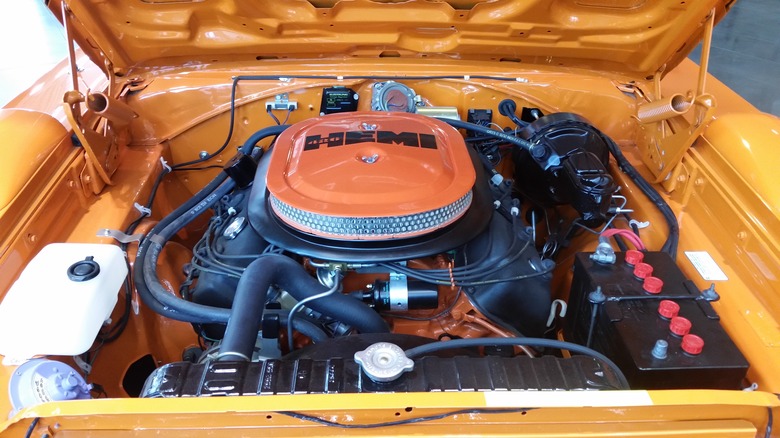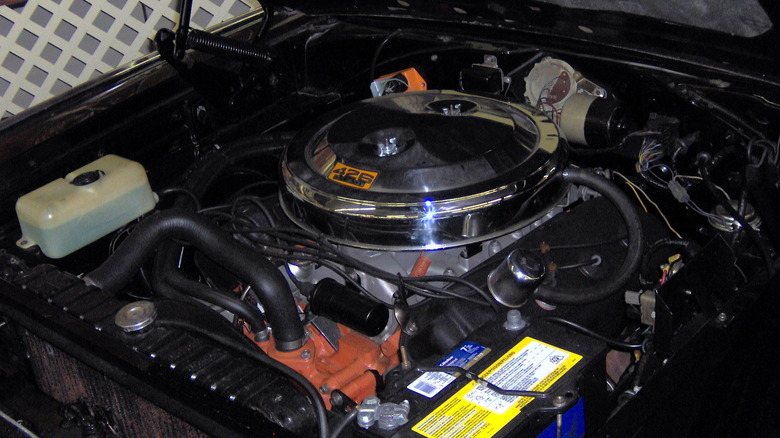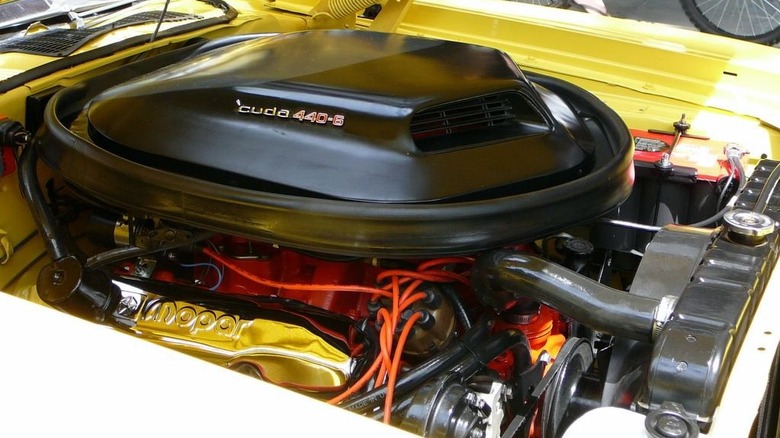Chrysler 426 Hemi Vs. 440 Six Pack: What's The Difference Between These Engines?
If you think about what American automobile culture was all about in the 1960s, it was obviously the muscle car. People wanted hulking, powerful engines that they could put under the hoods of their Dodge Charger or Plymouth GTX. Well, in the mid-1960s, Chrysler debuted two different engines that were designed to fulfill this hunger for America's gearheads. In 1964, the company started producing the 426 Hemi V8 engine, the revamped brand of hemispherical engines that had been out of commission since 1958. Two years later, Chrysler hit the market with the 440 V8 engine, part of the company's RB family of V8 engines.
Even though these V8 engines were from the same company and produced at the same time, doesn't mean they are identical, even if they were used in some of the same vehicles for several years. Here, we are going to look at the similarities and differences between these two engines to see why Chrysler found it necessary to produce two different massive V8 engines concurrently.
What is a 426 Hemi engine?
The Hemi family of engines were a staple of Chrysler — now Stellantis — up until 2023 when the company decided to cease their production. It began life in the early 1950s as the FirePower brand, a series of hemispherical V8 engines, meaning that the intake and exhaust are on opposite sides of the combustion chamber. After the FirePower engine faded away in 1958, Chrysler revived the design concept in 1964 and gave it the far more accurate name of "Hemi," where it debuted with this particular 426 V8 model.
The largest displacement for a FirePower engine was 392 cubic inches, so coming back to the market with a 426-cubic inch V8 — or 7.0L — was quite the step up. With its cast iron engine block, this thing was big, heavy, and powerful, and its original purpose was to be used in NASCAR races. However, NASCAR decided that the engines needed to be available in production vehicles as well, so Chrysler developed a street-legal 426 Hemi that the company then used through 1971. The Hemi was able to deliver a performance output of 425 hp and 490 lb-ft of torque and was available in a good number of vehicles over its run like the Dodge Coronet and Plymouth Road Runner.
Like so many V8s of the muscle car era, the oil crisis and changes to EPA standards on emissions caused Chrysler to abandon the 426 Hemi. The design and brand would not return until 2003, when it had its longest consistent run of production.
What is a 440 Six Pack engine?
When Chrysler discontinued its first generation of Hemi engines in 1958, the company turned to investing in a different line of V8 engines: the big block. While the Hemis had hemispherical combustion chambers, these big block (or simply B) engines were designed with wedge-shaped chambers. Though it was still a cast iron engine block, this design weighed significantly less and was cheaper to make. The B engine family also featured a subsection called RB, which was short for raised block. These were built like the normal big block engines but were taller, allowing for more displacement. The largest of them was the Mopar 440, which hit the market in 1966.
Chrysler had several different output versions of the 440, with the highest being the Six Pack iteration, which featured three two-barrel carburetors on the intake. Despite the larger displacement size, it couldn't quite reach the power output of the 426 Hemi, maxing out at 390 hp. However, it could match the Hemi with 490 lb-ft of torque. Thanks to it being lighter and cheaper, its usage across the various brands owned by Chrysler was much wider. While it was mostly used in muscle cars like the Dodge Charger or Plymouth GTX, you could even find the 440 in full-size sedans and SUVs, though not necessarily in the Six Pack version.
The 440 was able to last until 1978, despite horsepower rating changes in 1972 that drastically reduced its billed output and an overall turning away from V8 engines.


